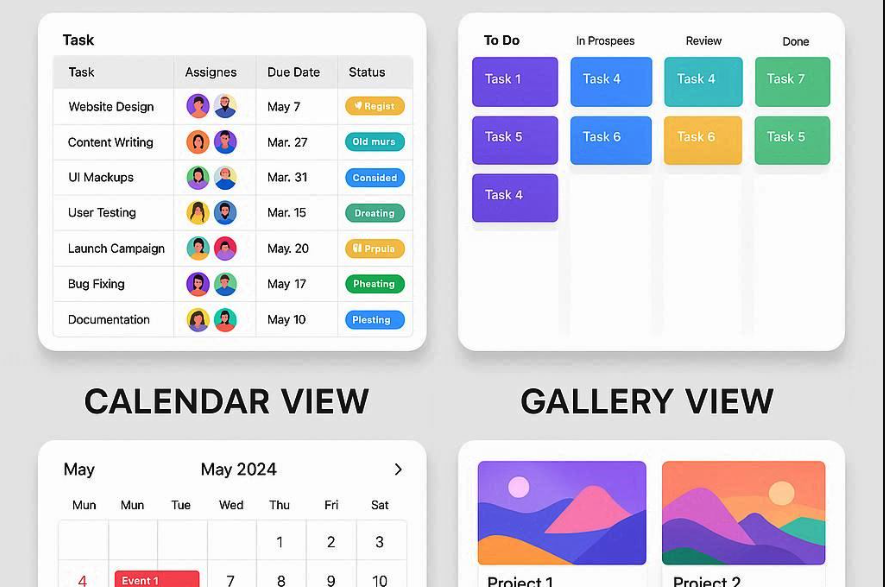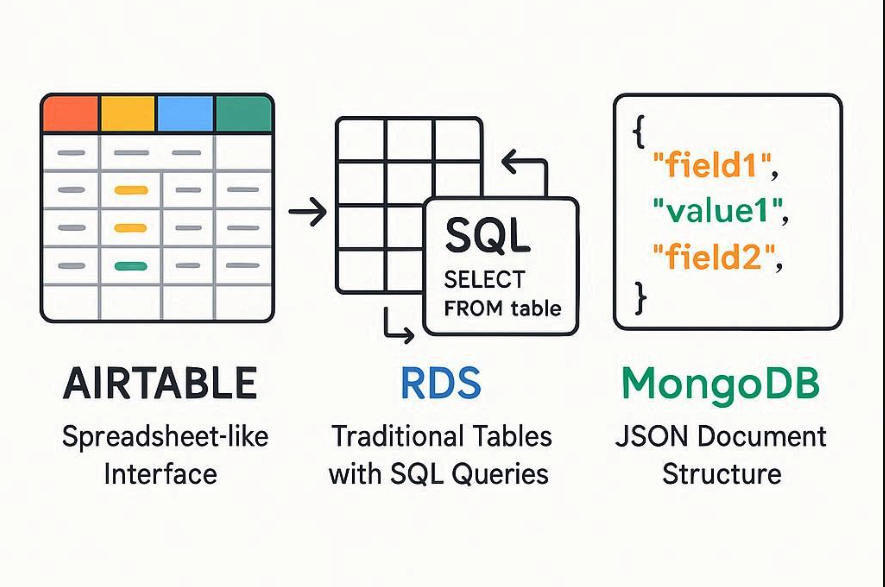Airtable: Collaborative Data | 매거진에 참여하세요
Airtable: Collaborative Data
#Airtable #Database #Collaborat #Platform #Data #Management #DBMS #SaaS #Difference #Unique
Traditionally, teams have relied on Excel or Google Sheets for data management and collaboration.
While these tools work well for small projects, they quickly hit limitations once projects become more complex and multiple teams need to collaborate.
This is where Airtable comes in. Airtable combines the familiarity of spreadsheets with the power of a database,
providing an easy-to-use platform for managing data, projects, and teamwork,all without needing a developer.
The Hybrid Nature of Airtable
The core value of Airtable lies in its hybrid model:
1. Spreadsheet + Database
- Spreadsheet-like interface → Beginner-friendly and intuitive
- Database functionality → Relational data, field types, linked records
2. Multiple Views
- Grid View: Classic spreadsheet style
- Kanban View: Ideal for task tracking and agile teams
- Calendar View: Visualize deadlines and schedules
- Gallery View: Manage image-driven data
3. Collaboration Features
- Invite teammates with role-based permissions
- Real-time comments, tags, and notifications
- Integrations with Slack, Google Workspace, Zapier, and more

Google Docs vs Airtable
Feature | Google Docs/Sheets | Airtable |
|---|---|---|
UI | Document/Spreadsheet | Spreadsheet + Database |
Row/Column Structure | Simple table | Field types & custom columns |
Relationships | Not supported | Linked Records across tables |
Visualization | Table only | Grid, Kanban, Calendar, Gallery |
Collaboration | Real-time editing, comments | Editing, comments, tags, alerts, role-based permissions |
Automation | Limited (Apps Script required) | Built-in Automations |
API Integration | Limited (Apps Script) | REST API + Zapier/Make integrations |
Airtable vs Traditional Databases
Concept | Airtable | RDS (Relational DB) | MongoDB (Document DB) |
|---|---|---|---|
Data Unit | Record | Row | Document (JSON/BSON) |
Attributes | Field | Column | Key-Value Field |
Relationships | Linked Records | Foreign Keys | Embedded Docs / References |
Structure | GUI-based relational model + cloud | SQL-based relational model | Document-based, schema-less |
Access | GUI or API | SQL queries | JSON & Mongo queries |
Automation/Collaboration | Built-in Automations, sharing, editing | Limited, admin-focused | Requires app-level integration |
Ease of Use | Beginner-friendly GUI | Requires SQL knowledge | Developer-centric |
Scalability | Cloud-based (Base/Workspace) | Vertical & horizontal scaling via service | Horizontal scaling via sharding |
Use Cases | Team collaboration, project/CRM/content management | Enterprise DB, transactions, backend systems | Big data, logs, unstructured data, NoSQL apps |

Business Use Cases
Project Management
Marketing campaigns, design projects, product development
Use Kanban & Calendar views to visualize progress
CRM (Customer Relationship Management)
Manage client data, deals, and interactions
Linked records & filters enable tailored services
Content Management
Blog posts, newsletters, social media content
Teams collaborate in real time on editing, review, and publishing
Startups & Small Teams
Build data-driven services without developers
Prototype MVPs, validate ideas, automate team processes
Developer Integration with API
If you want to extend Airtable into development workflows, it offers a REST API with authentication via API keys or OAuth.
CRUD operations are simple:
- Create: Add new records
- Read: Fetch data
- Update: Modify existing records
- Delete: Remove records
API Docs:https://airtable.com/{baseId}/api/docs
Why Airtable Stands Out
IT Perspective: Cloud-based, automation-ready, API-friendly
Business Perspective: Project management, CRM, content workflows
Design Perspective: Intuitive UX/UI, custom dashboards, productivity-focused
Airtable isn’t just another spreadsheet. It’s a lightweight yet powerful collaborative database platform that boosts team productivity, enhances data utilization, and streamlines workflows.
For teams and organizations aiming to build a data-driven collaboration environment, Airtable is fast becoming a must-have tool.
👉 If you’re choosing a database or collaboration platform, give Airtable a try,you may find it’s exactly what your team needs.






